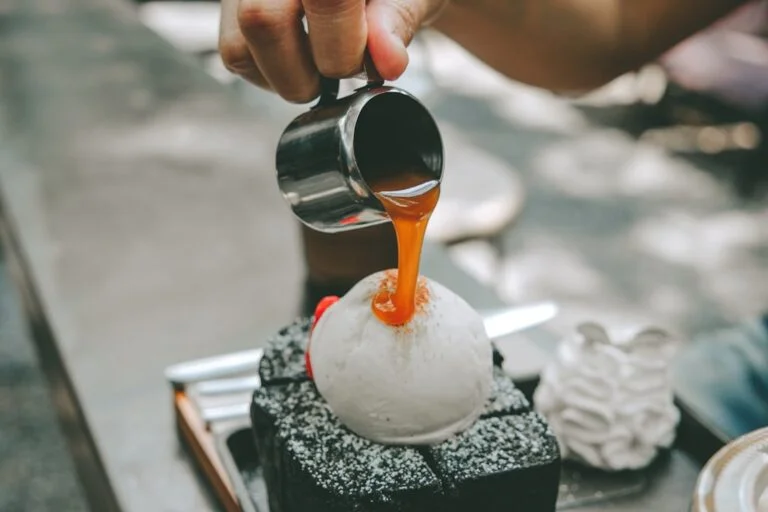Parma ham, known as “Prosciutto di Parma” in Italian, boasts a rich history that dates back to ancient times. The origins of this delectable cured meat can be traced to the Roman Empire, where the practice of salting and air-drying pork was already well established. Historical records suggest that the region of Parma, located in the Emilia-Romagna area of northern Italy, was particularly suited for this craft due to its favorable climate and abundant natural resources.
The combination of the region’s unique microclimate, characterized by warm summers and cold winters, along with the high-quality feed available for pigs, created the perfect conditions for producing exceptional ham. Over the centuries, Parma ham evolved from a local delicacy into a symbol of Italian culinary excellence, gaining recognition and prestige both domestically and internationally. The production of Parma ham became more formalized in the Middle Ages, when local artisans began to refine their techniques and establish standards for quality.
By the 18th century, Parma ham had gained significant popularity among the European elite, and its reputation continued to grow throughout the 19th century. In 1963, the Consorzio del Prosciutto di Parma was established to protect the authenticity and quality of this iconic product. This consortium set strict regulations governing the production process, ensuring that only hams produced in the designated area and following traditional methods could be labeled as “Prosciutto di Parma.” Today, this esteemed ham is celebrated worldwide, not only for its exquisite taste but also for its cultural significance as a representation of Italian heritage.
Key Takeaways
- Parma Ham has a rich history dating back to Roman times, and is still produced in the same region of Italy today.
- The production process involves carefully selecting and salting pork legs, then aging them for at least 12 months to develop the signature flavor.
- The unique flavor profile of Parma Ham is a result of the traditional production methods and the specific climate of the Parma region.
- Parma Ham is a versatile ingredient that can be used in a variety of culinary dishes, from appetizers to main courses and even desserts.
- Parma Ham is a healthy choice, as it is high in protein, low in fat, and free from additives or preservatives.
The Production Process
The production of Parma ham is a meticulous process that requires both skill and patience. It begins with the selection of high-quality pigs, specifically the Large White, Landrace, or Duroc breeds, which are raised in designated regions of Italy. These pigs are fed a diet rich in grains and whey from cheese production, which contributes to the unique flavor profile of the final product.
Once the pigs reach the appropriate weight, they are slaughtered, and the hind legs are carefully selected for curing. The first step in the curing process involves salting the hams with sea salt, which not only enhances flavor but also acts as a preservative. The amount of salt used is crucial; too much can overpower the natural taste of the meat, while too little can compromise its preservation.
After salting, the hams are left to rest for a period ranging from a few weeks to several months, allowing the salt to penetrate the meat thoroughly. Following this initial phase, the hams are washed and then placed in a controlled environment to begin the drying process. This stage is essential for developing the ham’s characteristic texture and flavor.
The hams are hung in well-ventilated rooms where they undergo a slow drying process that can last up to three years. During this time, natural enzymes break down proteins and fats, resulting in a tender and flavorful product. The final step involves careful inspection by experts from the Consorzio del Prosciutto di Parma, who assess each ham for quality before branding it with the official seal.
This rigorous process ensures that only the finest hams earn the prestigious title of Prosciutto di Parma.
The Unique Flavor Profile

The flavor profile of Parma ham is one of its most distinguishing features, setting it apart from other cured meats. Its taste is often described as sweet and nutty, with a delicate balance of savory notes that develop during the aging process. The unique flavor is attributed to several factors, including the breed of pig used, their diet, and the specific curing techniques employed.
The pigs raised for Parma ham are typically fed a diet that includes grains and whey from cheese production, which imparts a subtle sweetness to the meat. Additionally, the natural environment of Parma contributes to its flavor; the region’s air quality and humidity levels play a significant role in how the ham dries and matures. As the ham ages, it undergoes complex biochemical changes that enhance its flavor profile.
The slow drying process allows for the development of umami flavors, which are often described as savory or meaty. This depth of flavor is complemented by a tender texture that melts in your mouth. The aging process also allows for the formation of aromatic compounds that contribute to its distinctive aroma.
When sliced thinly, Parma ham reveals a beautiful marbling of fat interspersed with lean meat, which not only adds to its visual appeal but also enhances its flavor when consumed. This intricate interplay of sweetness, savoriness, and tenderness makes Parma ham a truly unique culinary experience.
Versatile Culinary Uses
| Ingredient | Culinary Uses |
|---|---|
| Garlic | Used in savory dishes, sauces, marinades, and dressings |
| Olive Oil | Can be used for sautéing, roasting, dressing salads, and marinating |
| Tomatoes | Used in salads, sauces, soups, and as a topping for pizzas |
| Herbs (e.g. basil, thyme, rosemary) | Enhance the flavor of various dishes including meats, vegetables, and pasta |
Parma ham’s versatility in culinary applications is one of its most appealing attributes. It can be enjoyed in various forms—whether served as an appetizer on a charcuterie board or incorporated into more elaborate dishes. One popular way to savor this delicacy is by wrapping it around fresh fruits such as melon or figs.
The sweetness of these fruits beautifully complements the savory notes of the ham, creating a harmonious balance that delights the palate. Additionally, Parma ham can be used as a topping for pizzas or flatbreads, adding depth and richness to these dishes. Beyond traditional pairings, chefs around the world have embraced Parma ham as an ingredient in innovative recipes.
It can be incorporated into pasta dishes, risottos, or salads to elevate flavors and add a touch of sophistication. For instance, tossing thinly sliced Parma ham into a creamy risotto can impart a savory richness that transforms an ordinary dish into something extraordinary. Furthermore, it can be used in sandwiches or paninis, where its delicate texture and flavor shine through when paired with fresh vegetables and artisanal bread.
The adaptability of Parma ham makes it an essential ingredient in both rustic and refined culinary creations.
Health Benefits of Parma Ham
While indulging in delicious foods often raises concerns about health implications, Parma ham offers several benefits when consumed in moderation. One notable advantage is its high protein content; it provides essential amino acids necessary for muscle repair and growth. This makes it an excellent choice for those seeking to maintain an active lifestyle or build muscle mass.
Additionally, Parma ham is relatively low in carbohydrates compared to many processed meats, making it suitable for various dietary preferences, including low-carb or ketogenic diets. Moreover, Parma ham contains beneficial nutrients such as vitamins B1 (thiamine), B2 (riboflavin), B6 (pyridoxine), and B12 (cobalamin), which play crucial roles in energy metabolism and overall health. These vitamins support various bodily functions, including red blood cell formation and nervous system health.
Furthermore, because it is made from high-quality pork without artificial preservatives or additives, consumers can enjoy it with greater peace of mind regarding food safety and quality. However, like all cured meats, moderation is key; excessive consumption may lead to increased sodium intake or other health concerns.
Pairing Parma Ham with Wine and Cheese

Pairing Parma ham with wine and cheese can elevate any dining experience into a gourmet affair. When it comes to wine selection, sparkling wines such as Prosecco or Champagne are excellent companions due to their effervescence and acidity that cut through the richness of the ham. The bubbles cleanse the palate between bites while enhancing the overall flavor experience.
For those who prefer red wine, light-bodied options like Pinot Noir or Chianti complement the savory notes without overpowering them. Cheese also plays a significant role in creating harmonious pairings with Parma ham. Soft cheeses like burrata or fresh mozzarella provide a creamy contrast that balances out the saltiness of the ham beautifully.
Alternatively, aged cheeses such as Parmigiano-Reggiano or Pecorino Romano offer robust flavors that enhance each bite when enjoyed together. A well-curated cheese board featuring various textures and flavors alongside thinly sliced Parma ham creates an inviting centerpiece for gatherings or special occasions.
How to Store and Serve Parma Ham
Proper storage is essential to maintain the quality and flavor of Parma ham once it has been opened. Ideally, it should be kept in a cool environment away from direct sunlight; refrigeration is recommended if you plan to consume it over several days. When storing sliced Parma ham, wrap it tightly in parchment paper or wax paper before placing it in an airtight container or resealable bag to prevent moisture loss while allowing some air circulation—this helps preserve its delicate texture and flavor.
When serving Parma ham, presentation matters just as much as taste. Slicing it thinly is crucial; using a sharp knife or a meat slicer ensures even cuts that showcase its marbling and color variations beautifully. Arrange slices on a platter with complementary ingredients such as olives, nuts, or fresh herbs for added visual appeal.
Allowing it to come to room temperature before serving enhances its flavor profile; this step allows the fat to soften slightly while releasing aromatic compounds that make each bite more enjoyable.
Where to Find Authentic Parma Ham
Finding authentic Parma ham requires some knowledge about sourcing quality products. The best place to start is by looking for hams that carry the official seal from the Consorzio del Prosciutto di Parma; this certification guarantees that it has been produced according to strict regulations within designated regions of Italy. Specialty Italian markets often carry authentic products imported directly from Italy; these establishments typically have knowledgeable staff who can guide you toward high-quality options.
Online retailers also provide access to authentic Parma ham for those unable to visit local markets or specialty stores. Many reputable websites offer direct shipping from producers in Italy; however, it’s essential to read reviews and verify their authenticity before making a purchase. Additionally, gourmet food festivals or events celebrating Italian cuisine may feature vendors selling authentic products—these occasions present an excellent opportunity to sample different varieties while learning more about their origins and production methods.
By taking these steps, you can ensure that you enjoy only the finest Prosciutto di Parma available on the market today.
Unfortunately, none of the articles provided in the list of links directly relate to Parma ham. These articles focus on the passing of notable individuals such as Joyce Randolph, Cindy Morgan, and Andre Braugher, and their contributions to television and film. If you are looking for content specifically about Parma ham, perhaps exploring culinary websites or articles dedicated to Italian cuisine would be more beneficial. If you need information on another topic or a different kind of link, feel free to ask!
FAQs
What is Parma ham?
Parma ham, also known as Prosciutto di Parma, is a type of dry-cured ham that is typically made from the hind legs of pigs raised in the Parma region of Italy.
How is Parma ham made?
Parma ham is made using a traditional method that involves salting the pork legs, allowing them to rest, and then curing them for a specific period of time. The process is strictly regulated by the Consorzio del Prosciutto di Parma to ensure quality and authenticity.
What makes Parma ham special?
Parma ham is known for its delicate flavor, tender texture, and distinctive sweet and nutty aroma. It is often considered a gourmet delicacy and is highly prized for its quality and traditional production methods.
How is Parma ham served?
Parma ham is typically served thinly sliced and can be enjoyed on its own, as part of an antipasto platter, or as a topping for pizzas, salads, and sandwiches. It is often paired with melon or figs for a classic Italian appetizer.
Is Parma ham healthy?
Parma ham is a lean meat that is high in protein and low in fat. It is also a good source of vitamins and minerals, making it a relatively healthy choice when consumed in moderation as part of a balanced diet. However, it is high in sodium, so individuals with high blood pressure or heart conditions should consume it in moderation.


















+ There are no comments
Add yours